If you’ve been around the car audio scene for a few decades, then you’ll recall a time when almost all amplifiers doubled their output power when the load impedance was halved. For example, an amplifier might have been rated to produce 75 watts per channel into a 4-ohm load and 150 watts into a 2-ohm load. It wasn’t unheard of to see low-power amplifiers like the infamous Orion 225 HCCA continue to double their power, right down to 0.5 ohms per channel. Do modern amplifiers behave like this? If not, why?
Making Power from an Amplifier
Let’s start with the basics. Your amplifier is designed to boost the voltage of the signal coming from your radio. By way of an example, let’s say you have a 1-volt RMS signal and you want the amplifier to produce 50 watts of power into a 4-ohm load. The signal would need to be increased to 14.14 volts out of the amp. That’s a signal gain of just over 5 decibels.
Because car audio speakers have a relatively low voice coil impedance (4 ohms), the amplifier will also deliver a significant amount of current to the speaker. In our 50-watt, 4-ohm example, the current flowing through the speaker is 3.536 amps.
One last piece of math. We’ll call this hypothetical amplifier a Class-D design and say that it has an overall efficiency of 80% when driving 4-ohm speakers. To produce 200 watts of power, the amp will need to consume 250 watts of power from the vehicle electrical system. If there’s 13.5 volts at the amplifier power terminals, it will draw 18.52 amps of current from the alternator and battery.
Old-School Amps Were Huge
Back in the day, nobody cared if a 200-watt amplifier was 20 inches long, 12 inches wide and had to be mounted in the trunk. Today, installers want that power from a package that will fit behind the radio or under a seat. Why does the size of the amplifier matter? Well, in order for it to function reliably, the heat sink needs to be large enough to keep the amplifier cool while it produces full power. In this case, our amp needs to shed 50 watts of heat. This number is the difference between the 250 watts it consumes and the 200 watts it delivers to the speakers. Dissipating 50 watts isn’t a significant issue.
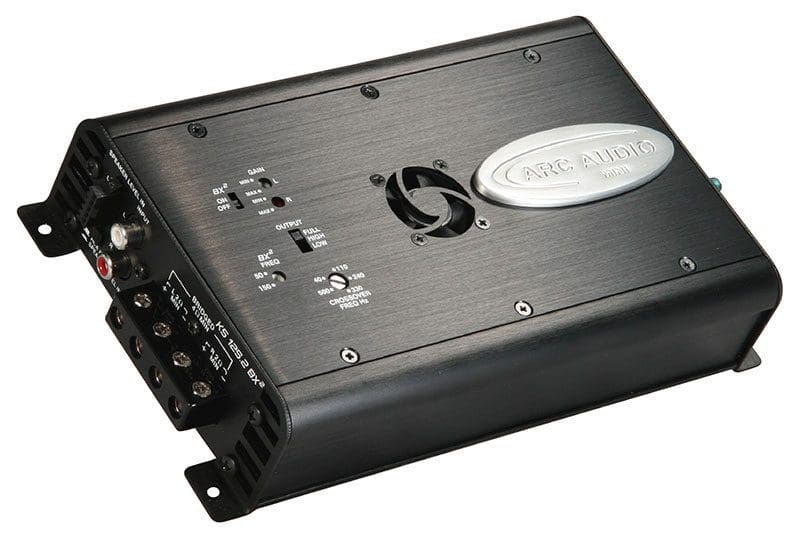
The compact KS125.2 BX2 amplifier produces 70 watts per channel into 4 ohms and 125 watts when loaded to 2 ohms.
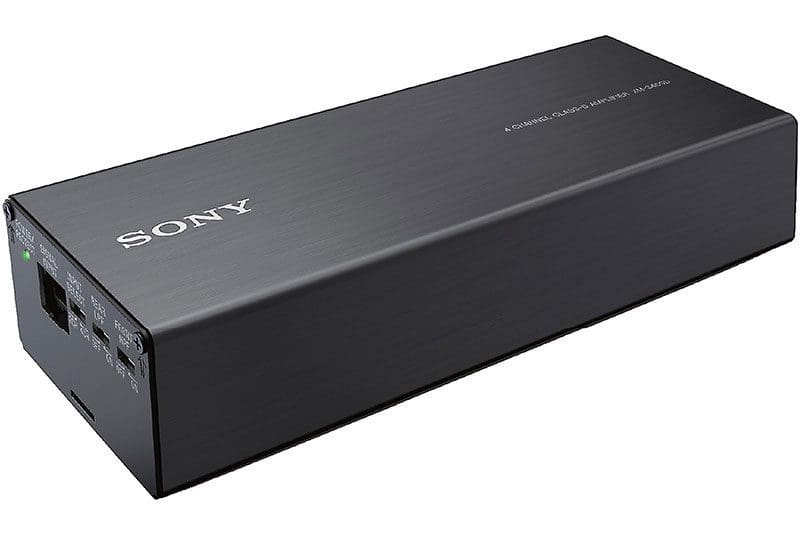
The Sony XM-S400D is rated to produce 45 watts per channel into 2- and 4-ohm loads to ensure reliable operation.
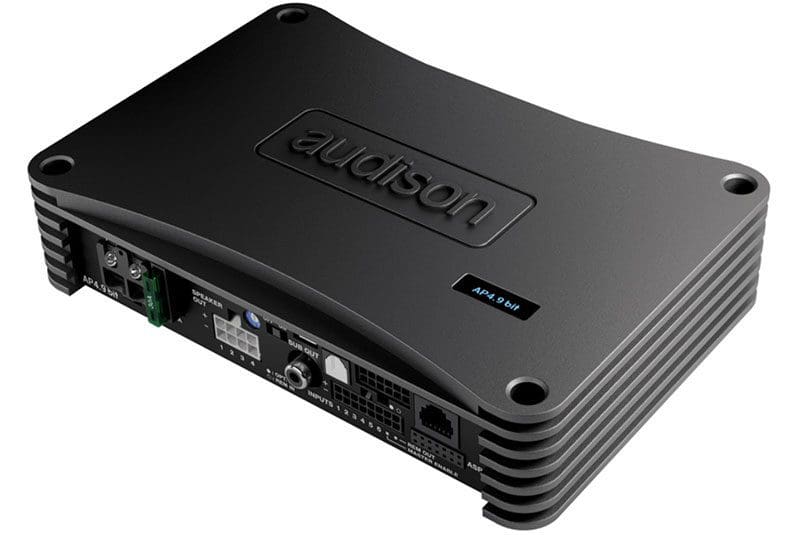
The four-channel, DSP-equipped Audison AP 4.9 bit produces 70 watts per channel at 4 ohms and 130 watts at 2 ohms.
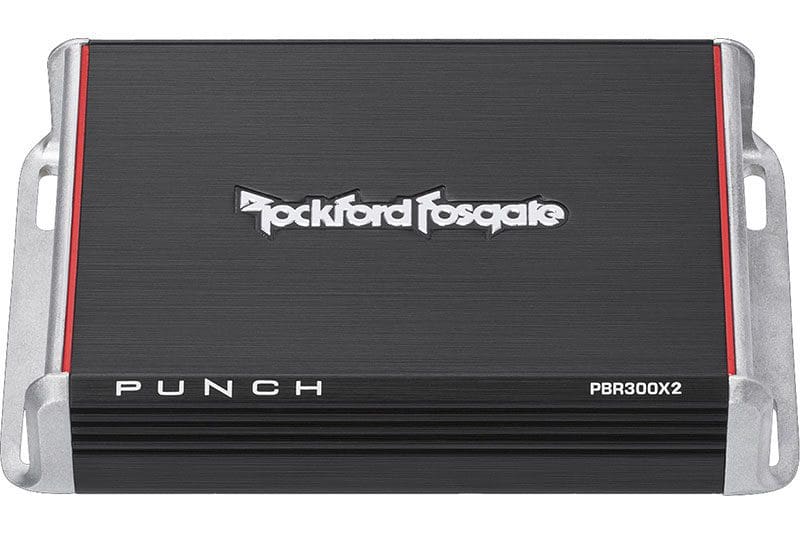
The Punch Boosted Rail-Series PBR300X2 amplifier delivers 150 watts per channel into 2 ohms and 100 watts per channel into 4 ohms.
Let’s add a second speaker to each channel of the amplifier so that we have a net load impedance of 2 ohms. The amplifier will still attempt to produce 14.14 volts on each output, but it will now flow 5 amps of current to each pair of speakers. We’re up to a total output current of 20 amps from our 14.14 amp draw at 4 ohms. When you load an amp down, its efficiency drops. Let’s say this Class-D amp offers 72% efficiency when driving 2-ohm loads. If the amp is to produce 50 watts to each of the eight speakers (400 watts), it needs to draw 555.6 watts from the car. At 13.5 volts, that would entail 41.15 amps of current flowing into the amplifier. The heat sink will need to dissipate 155.6 watts of thermal energy. That’s a LOT of heat.
When designing this amplifier, the engineer will need to come up with a way for it to manage this 155.6 watts of heat without allowing the components inside the amp to overheat. If the amp has to be very small, this might be a significant problem. Large heatsinks help radiate thermal energy into the air that surrounds the amplifier. Another cooling method is to add a fan to the amplifier design. Fans can dramatically reduce the size of an amplifier and help ensure that they run at cool temperatures. If you choose an amp with a fan, make sure it flows air across the heatsink where the output and switching devices are located. Blowing air into the middle of a circuit board does almost nothing.
The last option, and one that has become quite common, is to limit the amount of current the power supply will pass. Limiting current directly limits the amount of heat energy the heatsink needs to manage. Let’s reverse-engineer how much power our amplifier can produce if we limit the heat sink’s thermal capabilities to 120 watts.
If the energy wasted by the amp is 120 watts at an efficiency of 72%, then the total power it can consume is 430 watts, with 310 watts going to the speakers. In this scenario, each channel is producing 77.5 watts of power and each of the eight speakers would be receiving 38.75 watts when everything running at its maximum output capability.
Is There Anything Wrong with Current-Limited Amplifiers?
As we’ve demonstrated, limiting current controls the maximum amount of power an amplifier can produce in order to ensure that it doesn’t overheat when pushed to its limits. Are there any drawbacks to a design like this? Not really. Simply, you don’t get as much power when you load the amplifier outputs down further. This design decision isn’t directly detrimental to sound quality, distortion or the addition of noise to the audio signal.
If you’re shopping for an amplifier for your vehicle, drop by your local specialty mobile enhancement retailer and ask them about the best solution for your system design and budget.
This article is written and produced by the team at www.BestCarAudio.com. Reproduction or use of any kind is prohibited without the express written permission of 1sixty8 media.

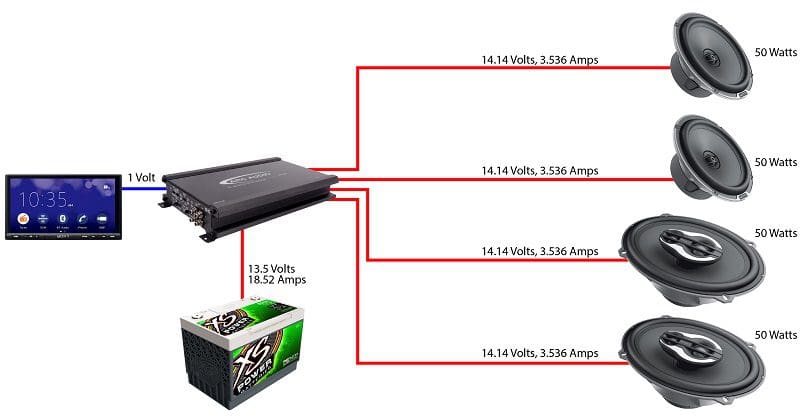
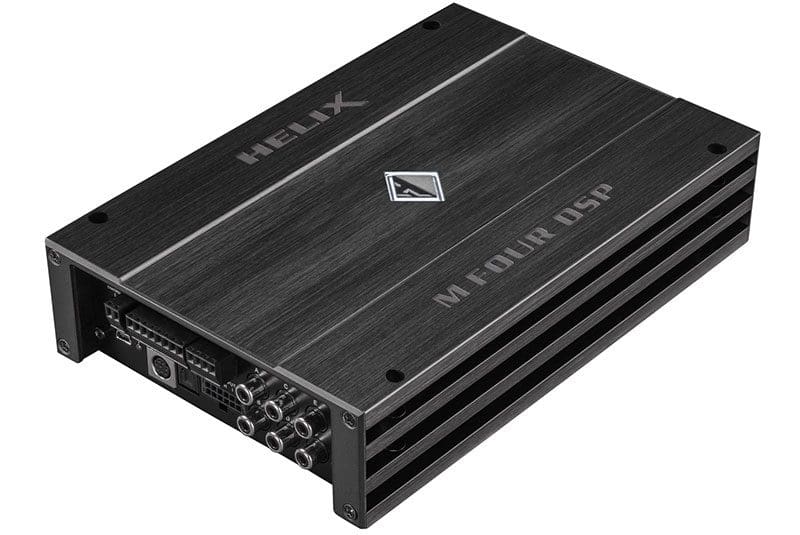
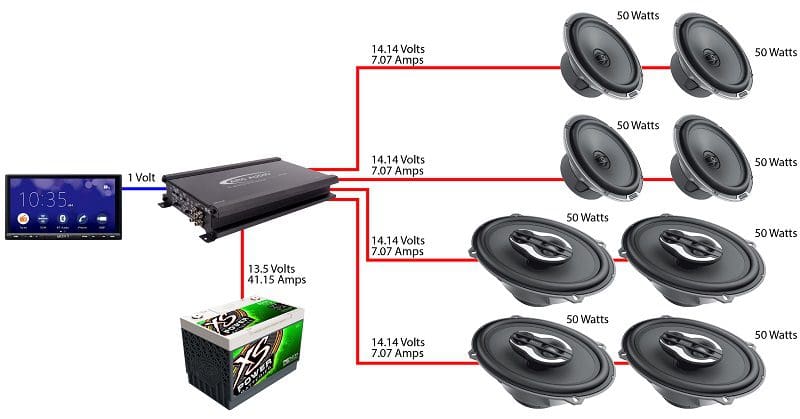
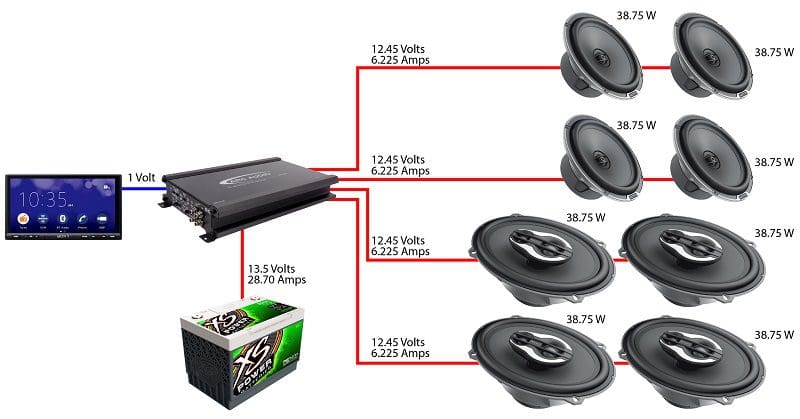
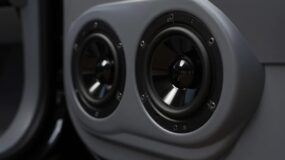

Leave a Reply